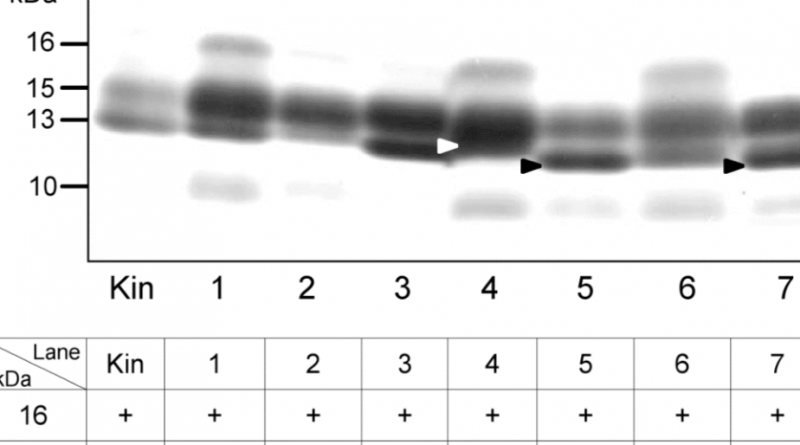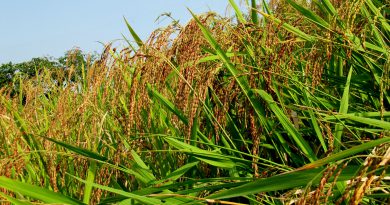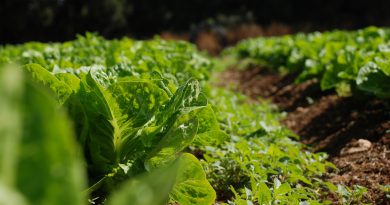Variation of seed storage prolamin from North Vietnam local rice cultivars
HOAI T. T., T. KUMAMARU and H. SATOH
Laboratory of Plant Genetic Resources, Institute of Genetic Resources, Faculty of Agriculture, Kyushu University, Fukuoka, 812-8581 Japan
Rice prolamin, an alcohol-soluble protein, constitutes 5 to 10% of total rice storage protein. We previously characterized seed storage prolamin in some local rice cultivars to provide the information for improving the nutritional quality of rice grain (Satoh et al. 1990, Aung et al. 2002). The study reported here was conducted to characterize the variation of prolamin profiles in Northern Vietnam local rice cultivars.
One hundred and eighty five cultivars collected from mountainous areas of Northern Vietnam were used in this study. A japonica rice cultivar Kinmaze and an indica rice cultivar IR36 were used as control varieties. Prolamins were extracted from rice flour derived from mature seeds using an extraction buffer containing 60% n-propanol and 5% 2-mercaptoethanol. SDS-PAGE with the discontinuous buffer system of Laemmli (1970) and isoelectric focusing (IEF) analyses were conducted to characterize the prolamin profile. By SDS-PAGE analysis, the prolamins extracted from Kinmaze and IR36 were separated into 16, 15, 13 and 10kDa polypeptides. SDS-PAGE patterns in prolamins from Vietnam rice germplasm ware shown in Fig. 1. Prolamins from local rice cultivars were separated into six bands ranging from 16kDa to 10kDa. In addition to 4 bands found in two control varieties, two specific bands, namely 14kDa and 12.5kDa, were observed. The number of SDS-PAGE bands per cultivars varied from three to four.

A large number of cultivars possessed three to four bands whereas a minimum number of cultivars were found with two to three bands. Prolamins from Vietnam rice cultivars varied not only in the presence or absence of bands but also in the staining intensity. The Vietnam rice cultivars were grouped into seven types based on the combination of bands differing in molecular mass. The 12.5kDa was presented in types 5 and 7, while the 14kDa was present in type 4. The variation in the staining intensity of 13 and 15 kDa bands were showed in types 1, 3 and 6. The 13kDa was absent in type 2. These results suggested that by SDS-PAGE analysis, Northern Vietnam local rice cultivars have a high diversity in prolamine profiles.

IEF analysis is known as an useful method for detecting variation of prolamine polypeptides based on their electric charges. Fig. 2 shows the variation in prolamine polypeptides among Vietnam rice cultivars by IEF analysis. Kinmaze and IR36 possessed seven bands. Nineteen IEF bands were detected totally among 185 cultivars. Among them, seven additional IEF bands were observed, bands 1, 4, 6, 8, 9, 14 and 18. The number of the IEF bands varying among cultivars ranged from 5 to 12. Thus, significant differences in staining intensity, pI and a number of bands were observed on prolamins from Northern Vietnam rice cultivars. It is interesting to note that ten IEF bands showed the greatest variation in IEF band patterns, which were characterized as four levels of staining intensity; absent, present, low and high. The Kinmaze and IR36 IEF band-type cultivars were found only in a few Vietnum rice samples. In addition to IR36 and Kinmaze patterns, a wide varity of other petterns was observed in other cultivars. Recently, a lot of intensively studies have focused on the aspect of genetic and synthesis of seed storage prolamin. However, in local rice cultivars, little is known about the relationship between IEF polypeptide patterns and genes encoded them as well as their expression by SDS-PAGE. In this study, we found that each SDS-PAGE types showed the wide variation in pI, the band staining intensity and a number of bands. However, SDS-PAGE band patterns and IEF band patterns were not well correlated. This result is consistent with a previous study (Aung et al. 2002).
References
Aung P. P., T. Kumamaru and H. Satoh, 2002. Genetic diversity of prolamin polypeptides in Myanmar local rice cultivars RGN 19:66-67
Kim W. and T. W. Okita, 1988. Structure, expression, and heterogeneity of the rice seed prolamine. Plant Physiol. 88:649-655
Laemmli U. K, 1970. Cleavage of structural proteins during the assembly of the head of bacteriophage T4. Nature 227:680-685
Satoh H., R. X. Roland and T. C. Katayama, 1990. SDS-PAGE analysis of storage proteins of cultivated rice collected in Madagascar, 1988. Kagoshima Uni. Res. Center S. Paci.,Occ. Papers. 8:101-113.



